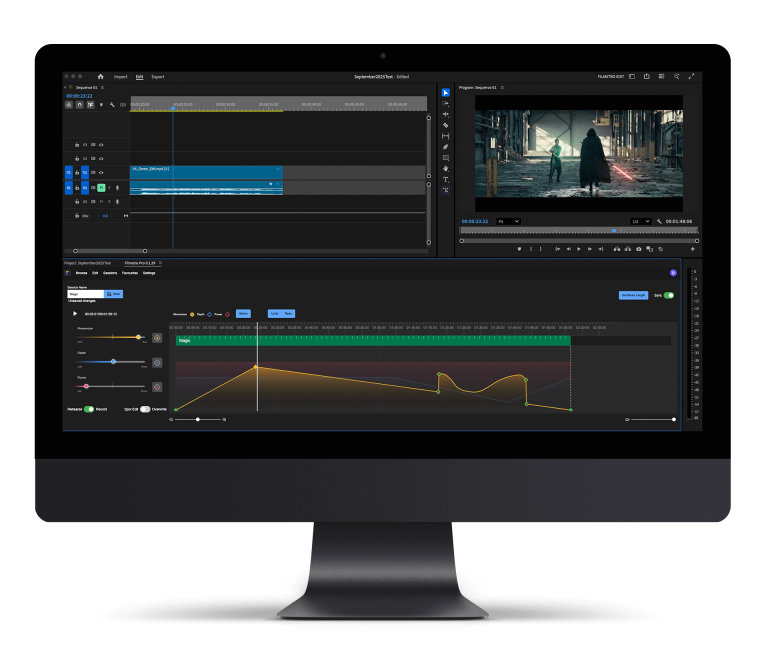If you have only watched a handful of movies in your life, there’s a good chance you will have been targeted by product placement. Whether that product placement had an impact on you is another thing but many modern films feature some of the planet’s best-known brands.
Some films beat you over the head with their advertising while others are subtle and introduce a product more gently. Can this act of product placement ever be natural? Why do companies choose to do it and how does it impact filmmakers?
The origins of product placement
Although it has risen to prominence in recent times, product placement in popular arts and productions isn’t new. In fact, it can be traced back to 1873 and Jules Verne’s iconic novel Around the World in 80 Days.
Before Verne’s novel was published, it was clear it was going to be a huge success. A number of ship liners and railway companies reportedly lobbied Verne to appear in the book. Whether Verne took payment and obliged is unknown but some descriptions detail specific companies that were popular at the time.
Another example of product placement in history is in the 1882 painting, A Bar at the Folies-Bergère by Édouard Manet. The painting is a bar scene with one bottle of beer looking suspiciously like that of the Bass Brewery. Today, product placement has grown to a near-$23 billion industry in 2021, which is expected to expand further as 2022 draws to a close.
How can companies arrange for product placement in films?
Most companies have several approaches to promoting and marketing their brand to the world. From digital marketing and SEO practices to word of mouth, advertising and PR, there are many ways for companies to get the word out about their services and products.
Promotional merchandise is a powerful marketing tool. It allows potential customers to see a brand in real life to improve awareness and loyalty. While large companies engage in promotional merchandise, they sometimes seek out a product placement agency. This is to help them scale their advertising up to feature in films and TV shows.
These agencies assist companies in prop and product placement in some of the world’s most popular productions, amplifying their reach. Their specialism often extends beyond props, also helping brands find the right scripts and logistics to suit their needs.
Why do companies engage in product placement?
The nature of an advertisement makes it ideal to feature in a visual medium and film has enjoyed a close relationship with product placement since its growth in popularity. As such, many companies view product placement in a Hollywood blockbuster as the ultimate in advertising and brand exposure.
To prove just how lucrative this can be for film studios, 2013’s Man of Steel raked in $160 million from a plethora of companies bidding for product placement. That $160 million in fees made up over half of the film’s $225 million budget. This potentially making the film feel like a high-budget commercial for some viewers.
Perhaps most importantly, for the companies concerned, product placement works. A 2018 study discovered that it’s 11% more effective at driving purchases than a typical 30-second ad break. It also 10% more effective at promoting brand affinity.
Types of product placement
In an interview with the New York Times, Stacy Jones, of product placement agency Hollywood Branded, explained that the majority of placements are not in exchange for payment.
While paid placements are a viable approach for maximum exposure, Jones claims that the majority of product placement in film and television happens on a quid-pro-quo basis. For example, a coffee company may provide an expensive barista machine to the set of a movie for free. In exchange the character will be sipping on that particular brand when the final cut airs.
Different placement techniques
Subtlety might be the best way to naturally integrate products into film and TV productions. However, opting for a more blatant and obvious approach can be more effective for brand exposure. Nonetheless, filmmakers must walk a fine line between ‘selling out’ and taking people out of the moment with jarring product placement.
A more understated approach could range from something as simple as the desktop being used in an office environment to the pen a character holds to sign a document. At the other end of the spectrum movies like Cast Away and Back to the Future II appear to have shoehorned in product placement segments from the world’s most famous brands.
The changing film and TV landscape
The film landscape have changed in recent years, so too have the ways filmmakers have placed products in their work. Traditional advertising means are falling with the boom of streaming services and social media. This then is ushering in a new age of product placement.
Amazon, for instance, is testing a new method which will see the streaming service offer virtual placement. This aims to avoid directors thinking about the traditional methods for getting brands front and centre in their art. Tech companies provide the opportunity to place products in shows that have already been recorded, with AI capable of swapping one branded item for another.5
This may also allow brands from certain markets to feature in popular productions they may otherwise have missed out on. However, without the actors interacting with the products, can this be convincing to watch?
Products are a part of life
There is no escaping the sheer volume of brands and products that surround us in ordinary life. So by that logic, it is almost unnatural for a film to be devoid of any recognisable brand or product.
But a film that features wall-to-wall products as part of everyday life may be overwhelming to viewers. It will feel like a feature-length advertisement because that’s how we’ve been conditioned to view brands and products in films or TV shows.
Given that we use products in normal life as intended, filmmakers are protected by copyright laws to do the same. That means we could see branded products being used without fanfare and the deliberate camera cuts to perfectly show off a company logo while someone is checking their watch or drinking a beer.
Can product placement be natural in film?
In terms of product placement commissioned by brands, there has to be a fine line for it to feel natural. Too promotional and it’s often cheesy, obvious and breaking the moment. However, too subtle and brands may feel like they didn’t get enough exposure. There must be a level of give and take for natural product placement, with a brand being featured organically, rather than shoehorned in to appease financial backers.









